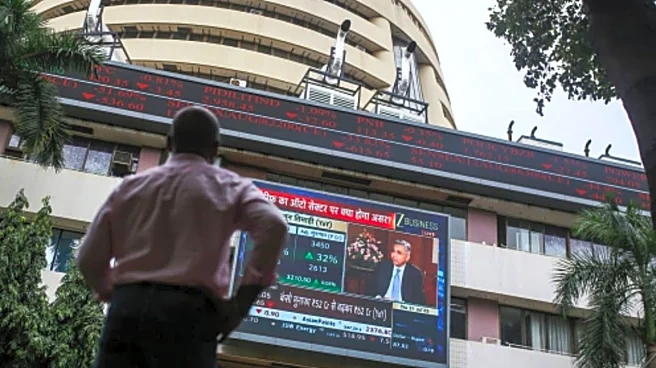With the new Income Tax Act, 2025 (ITA 2025) set to come into force from April 1, 2026, Deloitte has outlined a sharp set of Budget expectations aimed at simplifying India’s direct tax landscape, reducing compliance friction and strengthening India’s competitiveness in digital and innovation-led sectors.
According to Rohinton Sidhwa, Partner, Deloitte, and Amit Bablani, Partner, Deloitte, while the new ITA marks a “transformative step” through standardised terminology, clearer drafting and digital-first
enforcement, several operational gaps remain. Addressing these, they say, should be a key focus of the upcoming Budget.
The overhaul of the Income-tax Act, 1961—through the passage of the Income-tax (No. 2) Bill, 2025—has introduced the unified concept of a ‘Tax Year’, broadened the definition of Virtual Digital Assets and empowered the government to frame schemes to improve efficiency and accountability. The reform is intended to modernise a law that has been in place for more than six decades. But as Deloitte notes, the direct tax system still needs targeted refinements to improve ease of doing business.
Rationalisation of TDS/TCS: The biggest ask
Deloitte’s top priority is a major simplification of India’s withholding tax framework, which today spans multiple TDS/TCS rates ranging from 0.1% to 35%. The firm argues that this complexity not only increases the risk of errors but also creates liquidity constraints for taxpayers who end up overpaying and waiting for refunds.
Deloitte’s key proposals include:
Leverage the GST system to cut TDS/TCS
Since GST already captures transaction-level data, Deloitte recommends eliminating TDS/TCS on all transactions where GST is applicable. The Income Tax Department, it says, can rely on information returns using data from GST filings—avoiding dual compliance.
Collapse withholding into three simple categories
To reduce ambiguity, Deloitte proposes a three-rate structure under ITA 2025:
- 0.1% on purchase of goods and e-commerce transactions (where GST is not applicable)
- 2% on all service transactions (non-GST)
- 10% on residual categories such as interest and dividends
This, the firm says, will significantly simplify administration for both taxpayers and the department.
Remove TDS/TCS certificate requirement
With digitised reporting now standard, Deloitte recommends dropping the requirement to issue certificates under Section 395, arguing that it adds unnecessary compliance burden.
International tax: Restore clarity on SEP
Deloitte has also asked for urgent clarity on the provisions related to Significant Economic Presence (SEP)—introduced in 2018 to tax digital businesses that operate in India without physical presence.
Over time, amendments have broadened the scope of SEP beyond digital transactions, inadvertently covering physical transactions as well. Deloitte argues that this is inconsistent with the original intent of aligning India’s tax regime with BEPS Action Plan 1.
The firm recommends that the government:
- Restore the original legislative intent restricting SEP to digital transactions
- Define ambiguous terms such as “systematic and continuous solicitation”, “interaction with users” and “any person in India”
- Clarify that only active users be counted and that group-company transactions be excluded
- Issue draft FAQs or guidance for public consultation to ensure certainty on metrics and thresholds
- Specify income attribution rules, which are currently absent
- Clarify whether non-residents are required to report SEP when tax treaties already protect them from taxation absent a physical PE
Deloitte notes that without these clarifications, taxpayers face avoidable litigation and compliance uncertainty.
Tax incentives for emerging sectors: R&D, renewable energy and AI
With India seeking to position itself as a global hub for research and advanced technology, Deloitte says the Budget must go beyond existing benefits—which currently include:
- ~100% deduction for approved scientific research expenditure
- Additional depreciation for power-sector machinery
- 100% profit deduction for eligible start-ups for three years
Deloitte recommends new targeted incentives, including deeper tax breaks, enhanced deductions and reduced corporate tax rates for companies operating in R&D-intensive, renewable energy, deep-tech and AI-led segments. These, the partners say, would align India with global best practices followed in countries such as South Korea and the US.
Policy fixes: Employment incentives & stock compensation
Raise outdated limits and fix structural issues in employee-related deductions
Under Section 146, businesses are eligible for a 30% deduction on additional employee cost. However, the current Rs 25,000 monthly emolument limit—unchanged since 2016—does not reflect today’s wage realities.
Deloitte also points out challenges such as the requirement to show a net increase in employee count at year-end and the exclusion of replacement hires. The firm recommends revising limits and simplifying rules to align with real-world hiring patterns, especially in high-turnover sectors.
Certainty on stock-based compensation deductibility
Many Indian subsidiaries pay foreign parent companies for employee stock awards, but tax authorities often dispute the deductibility of these payments.
Deloitte wants clear rules confirming that such payments are deductible business expenditure, with guidance on valuation norms, the timing of deduction and required documentation. This, it says, will reduce litigation and help companies retain global talent.
In a nut shell
In sum, Deloitte’s Budget expectations revolve around simplifying compliance, restoring clarity in cross-border tax rules and creating a progressive incentive framework for emerging industries. With ITA 2025 already laying the foundation for a modern tax regime, the firm says the next Budget presents a crucial opportunity to streamline and future-proof India’s direct tax system.
/images/ppid_59c68470-image-176407505181264312.webp)

/images/ppid_59c68470-image-176406502910821458.webp)
/images/ppid_a911dc6a-image-176405256062146858.webp)




/images/ppid_59c68470-image-176396504060578910.webp)
/images/ppid_59c68470-image-176404511161766878.webp)
/images/ppid_59c68470-image-176396503411948850.webp)

/images/ppid_59c68470-image-176407262453480734.webp)

/images/ppid_59c68470-image-176404753516345358.webp)